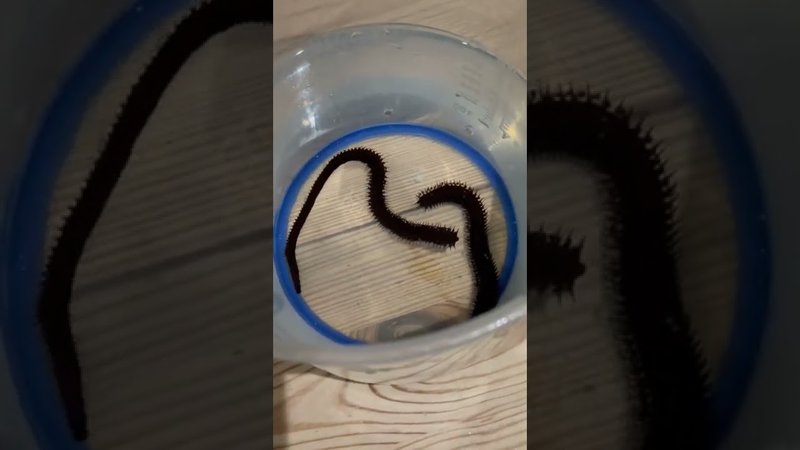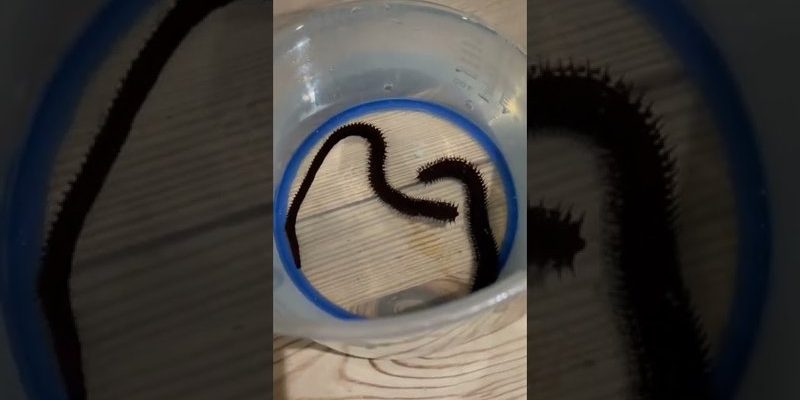
To answer this, let’s dive into what makes bobbit worms tick, their habitat preferences, and how they interact with the tanks they live in. Understanding these aspects will help you better appreciate these fascinating creatures while also protecting your aquarium investment.
What Are Bobbit Worms?
Bobbit worms, belonging to the *Eunice* genus, are marine creatures found in oceans around the world. They can stretch up to three feet long, with a body made up of multiple segments and a mouth filled with sharp jaws. These worms are predatory by nature, ambushing fish and other small animals that venture too close to their burrows. Think of them like the ultimate underwater ninjas—masterful at hiding and exceptionally quick when it comes to striking.
While they may look intimidating, bobbit worms actually play an essential role in their ecosystems. They help to aerate the sand and contribute to the overall health of the marine environment. However, their predatory habits and impressive size can make them a little daunting for aquarium hobbyists.
The Structure Of Acrylic And Glass Tanks
When thinking about the potential threat bobbit worms pose to your aquarium, it’s important to understand the materials your tank is made of. **Acrylic** tanks are popular because they are lightweight and come in various shapes and sizes, but they can scratch more easily than glass. On the other hand, **glass tanks** are more traditional, generally offering better durability and scratch resistance.
Most importantly, both acrylic and glass tanks have a certain thickness that can influence their durability. For instance, a standard glass tank might be around 1⁄4 inch thick, while many acrylic tanks can be thicker but also more prone to scratches and cracks. This brings us back to bobbit worms: can they pierce these materials?
Can Bobbit Worms Piercing Your Tank? Let’s Break It Down
The short answer is **no**—bobbit worms cannot pierce through acrylic or glass tanks. Their jaws are sharp and powerful enough to take down fish, but they lack the anatomical structure needed to break through solid materials like glass or acrylic. Imagine trying to bite through a piece of plastic; it’s just not going to happen, right?
However, while bobbit worms can’t directly damage the tank’s structure, they can create problems indirectly. For instance, if a bobbit worm is housed in a tank that doesn’t provide enough space or resources, it may become stressed. This could lead to aggressive behaviors, including digging and burrowing, which can disturb tank decorations and equipment. So, while your tank remains intact, you might still face challenges regarding the worm’s behavior and well-being.
Considerations For Keeping Bobbit Worms
If you’re thinking about adding a bobbit worm to your setup, there are a few key considerations to keep in mind. First, bobbit worms thrive in environments that mimic their natural habitats—typically sandy, deep substrates where they can dig and conceal themselves. This means your tank’s substrate should be deep enough for the worm to burrow in comfortably.
Here’s a quick checklist for a bobbit worm-friendly setup:
- Deep sand substrate (at least 4 inches).
- Stable water parameters (temperature, pH, salinity).
- Reliable filtration to keep the environment clean.
- Avoid placing small fish that could become prey.
Taking the time to create the right habitat not only benefits the worm but also helps keep your aquarium balanced and healthy.
Signs Your Bobbit Worm Is Unhappy
Just like any pet, bobbit worms can show signs of unhappiness, and it’s crucial to be attuned to their needs. If your bobbit worm is becoming increasingly aggressive—showing itself more often or burrowing excessively—it might be a sign of stress. You might also notice it eating less or not responding to feeding as it usually would.
Monitoring your bobbit worm’s behavior can help you identify potential issues early. Adjusting their environment, whether it’s changing the substrate or ensuring they have enough hiding spots, can make a world of difference.
Alternatives To Bobbit Worms
If you’re still on the fence about adding a bobbit worm to your aquarium, there are several alternatives that might suit your needs better. For example, you could consider **sand-dwelling shrimp** or **small gobies** that also contribute to the ecosystem. They won’t pose the same predatory threat, and they add a lively dynamic to your tank.
Each species has unique care requirements, so make sure to do your research. You might find that other marine life can provide the same aesthetic and functional benefits without the potential challenges that come with bobbit worms.
Final Thoughts on Bobbit Worms and Tank Safety
Understanding whether bobbit worms can pierce acrylic or glass tanks is vital for any aquarium enthusiast. The good news is that these fascinating creatures won’t compromise the integrity of your tank. However, ensuring that your bobbit worm has a proper setup and environment is key to keeping both your aquarium and its inhabitants thriving.
In essence, while bobbit worms might not be the ideal fit for every tank, they can add a unique element to those who are prepared to provide the right conditions. Just remember to observe their behavior, and don’t hesitate to explore other options if they don’t seem like a good fit for your underwater world. Happy fishkeeping!

